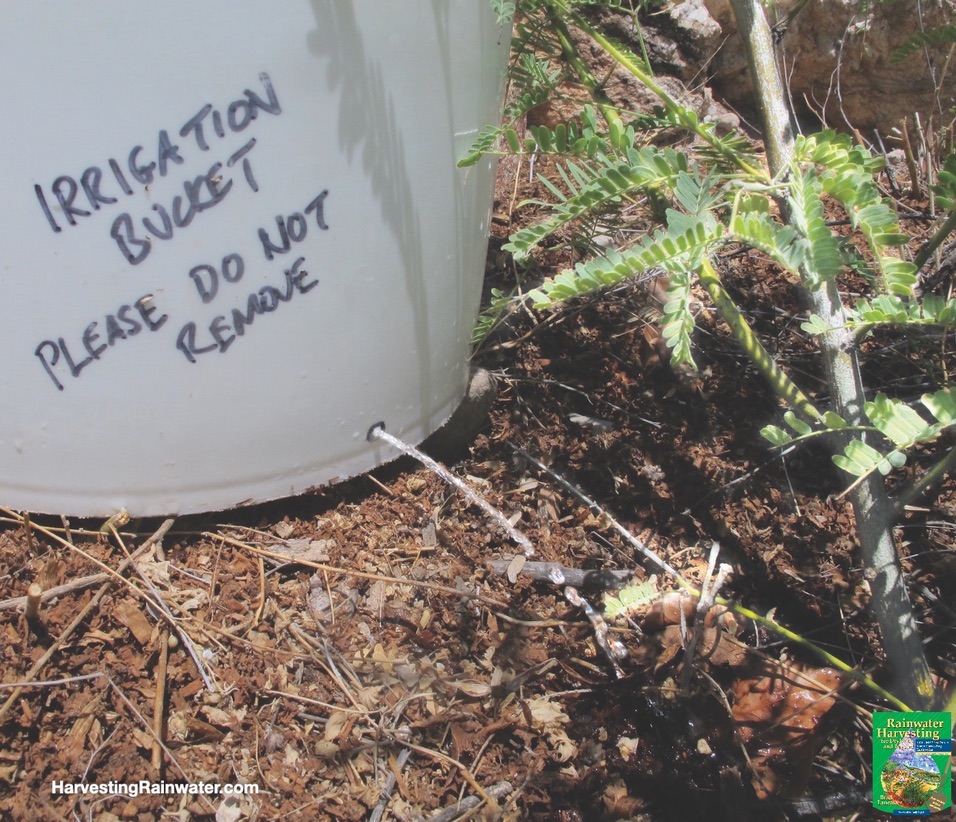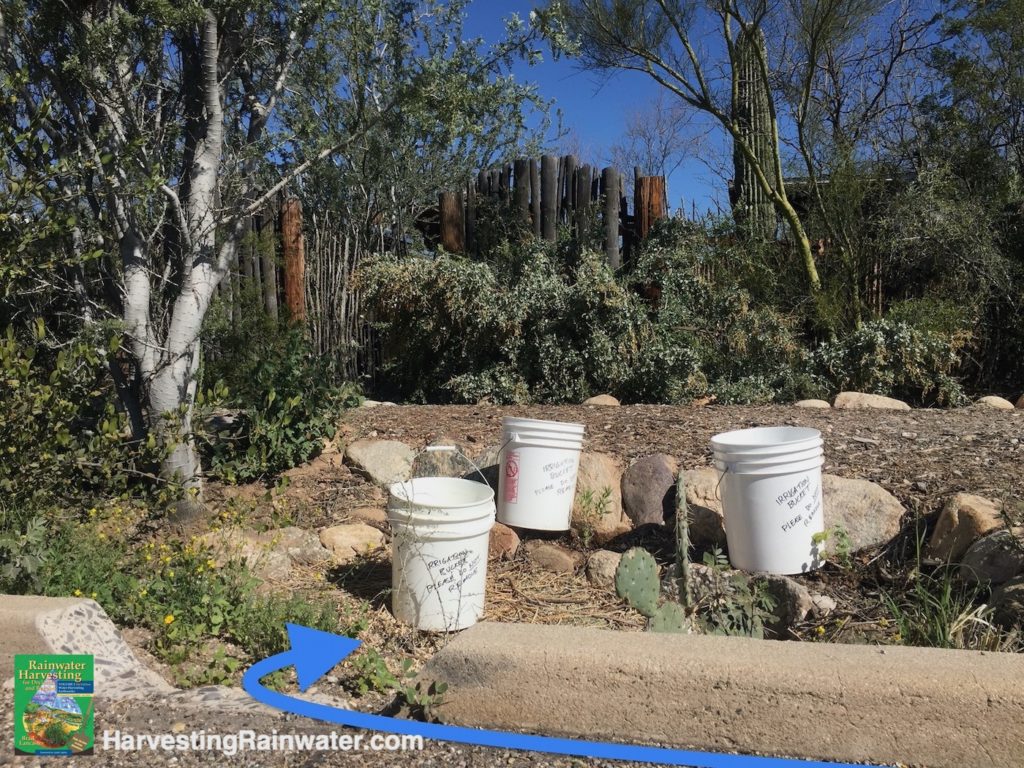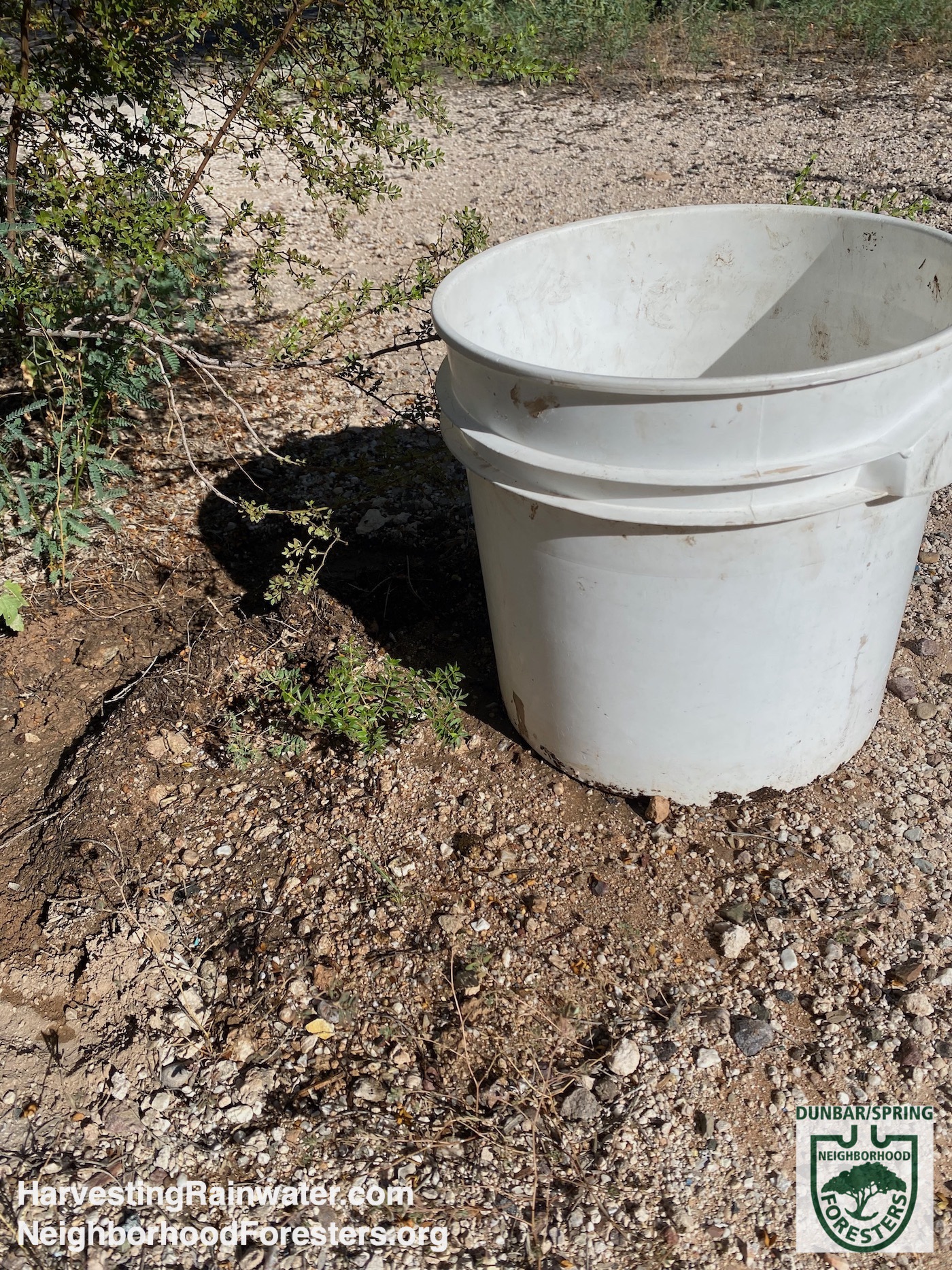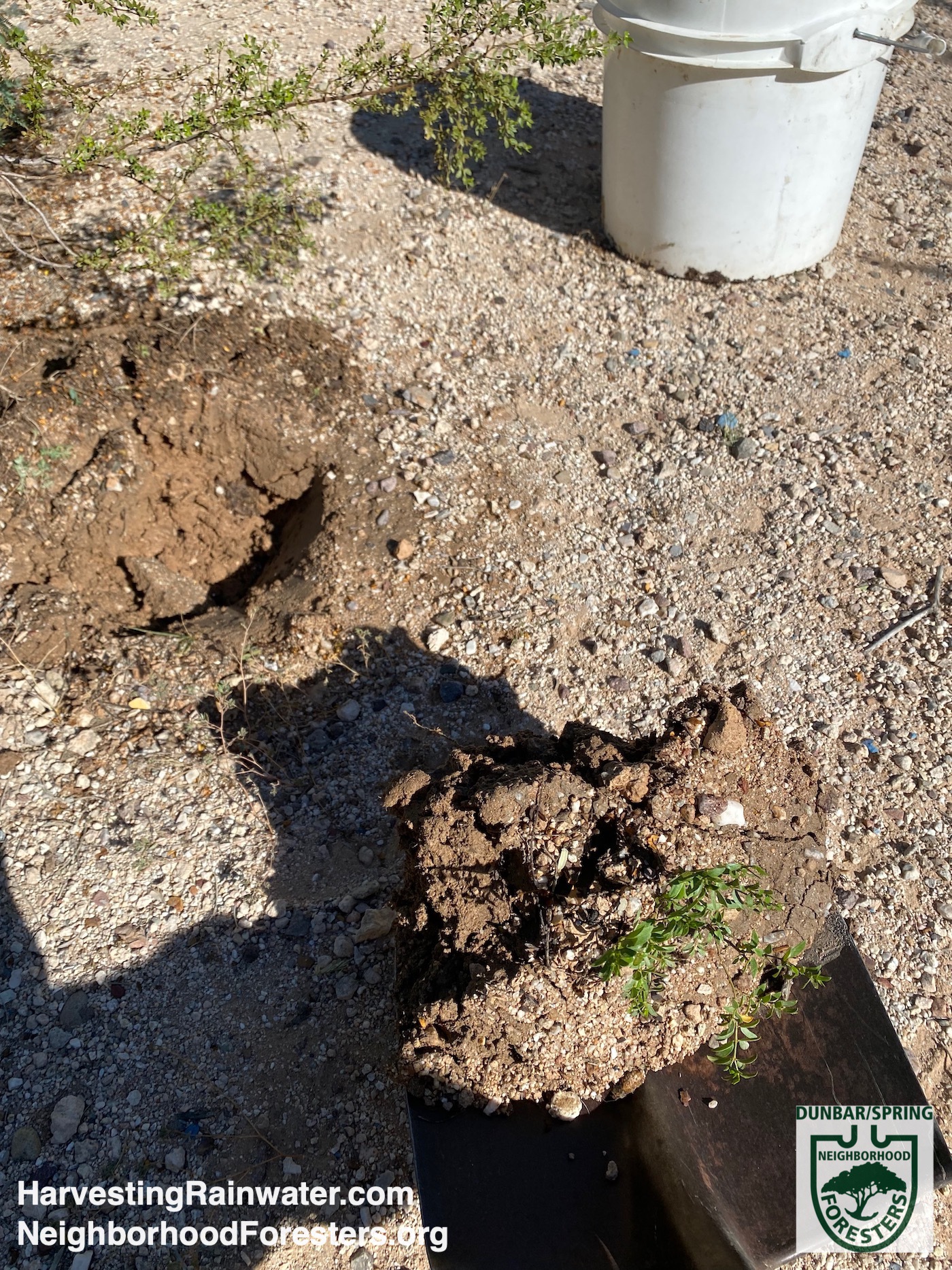Drip irrigation buckets—a free, mobile drip irrigation system
This system works great as a temporary drip irrigation system to get your newly planted plants established.
Move them around as needed.
Once your plants are established, this bucket irrigation system moves on to other new plantings, leaving no plastic crap behind, and no chance of leaks.
I plant the rain before I plant any plant, and if planting a higher water use plant such as an exotic fruit tree, I first plant the rain AND household greywater so those free, on-site water sources are the primary irrigators of my plants.
But to get the plants established I need to give them some supplemental water to get their roots growing. Instead of investing in a bunch of plastic tubing and parts that will leak in the future, and consume more water and money; I make and use free drip irrigation buckets.
I use plastic 5-gallon (20-liter) buckets with metal handles (plastic handles break).
Don’t buy a new bucket, if you can get a used one—turn a waste into a resource.
I can get used buckets for free from painters (they have tons of used buckets their latex paint comes in), solar installers (they use lots of latex roofing paint on many of their jobs), donut shops (though some sell their used ones), bakeries (like those in big grocery stores), and delis. I inquire inside with such establishments, and I check their dumpsters.
I then drill an 1/8th-inch (3mm) diameter hole in each bucket’s side, right above the bottom of the bucket.
Fill the bucket with water (ideally rainwater harvested in your rainwater tank—though make sure you use a full-port valve and correctly-sized hose to make this fun and easy), carry the bucket to where it is needed, and the water will empty through the hole in about an hour.

Place bucket beside newly planted vegetation when watering.
Note on bucket reduces theft of bucket when watering in the public right-of-way.
I also, retrieve the buckets after each watering when placed in the public right-of-way.
Photo: Brad Lancaster

Note: the curb cut in the foreground directs street runoff to the tree’s basin.
Blue arrow denotes street runoff flow.
See chapters 8 and 11of Rainwater Harvesting for Drylands and Beyond, Volume 2, 2nd Edition for more
Want to push the envelope?
This is also a great safe (and legal) way to urigate your plantings.
Human urine is high in nitrogen, and makes a great free fertilizer if you dilute it with water.
So, you can near fill up one of these drip irrigation buckets (again, ideally with salt-free rainwater), then pee in it, then carry it over to the plant in need.
As long as you do the peeing in a private spot, you can safely and legally then carry the nutrient-charged water to a planting in the public right-of-way (with no risk of any indecent exposure).
Your plants will love it, and all might lead to a story as well.
Case in point, on a hot day a friend of mine was riding his bike though my neighborhood and saw one of my irrigation buckets irrigating a new street-side planting within a street runoff-harvesting rain garden. He decided to stop and cool off by splashing his face with water from the bucket.
Cool off he did, but he also then smelled a hint of urine.
“What the…!” he thought, then realized I’d probably peed in the bucket to harvest and cycle my nutrients as well as water.
“Cool!” he thought, then went home and did likewise.
Also works great to saturate root zone of a volunteer seedling you want to transplant elsewhere
You may have a wonderful seedling growing in a pathway or driveway where it will get trampled or run over if not moved. Transplanting works great right after a good rain when the soil is moist, soft, and holds together around tender young roots; but typically fails when the soil is dry, hard, and crumbles off roots when disturbed with a shovel.
So, if you missed your just-after-a-rain window, you can saturate the soil around the seedling with a drip irrigation bucket just before you transplant it.

Photo: Brad Lancaster

After replanting, I’ll give it a bucket of water to minimize transplanting stress.
Photo: Brad Lancaster
See here for video on the transplanting process.
Here’s a video on the transplanting process
For more info
on this and other great strategies be sure to check out my books, Rainwater Harvesting for Drylands and Beyond
See the new, full-color, revised editions of Brad’s award-winning books
– available a deep discount, direct from Brad:

Volume 1
This is THE book to assess your free, on-site waters, the create an integrated design to harvest them.

Volume 2
This books has step-by-step instructions for many different types of water-harvesting earthworks or rain gardens for many different contexts.
Its also full of innovative, inexpensive strategies such as free drip irrigation buckets!
